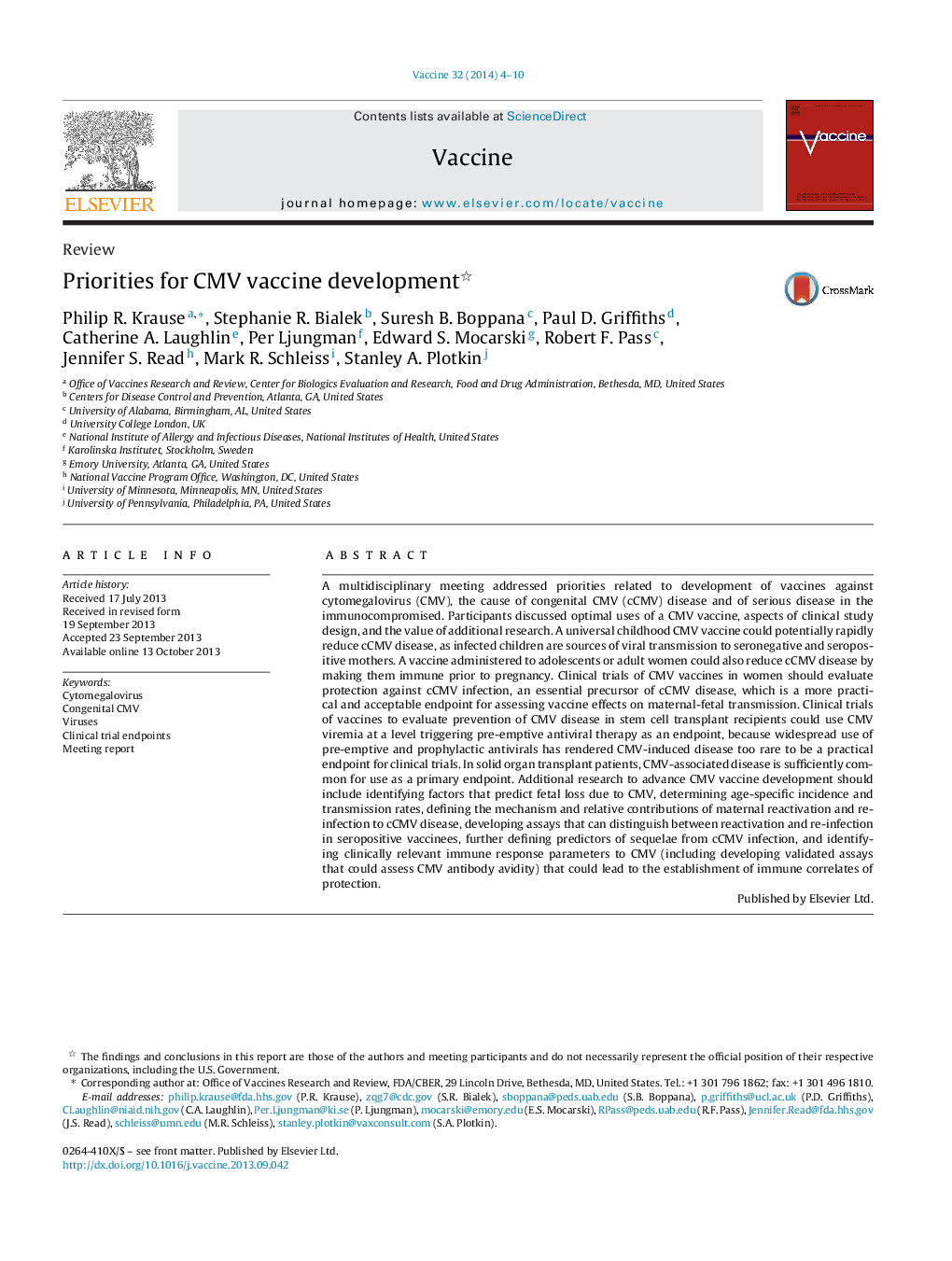| Article ID | Journal | Published Year | Pages | File Type |
|---|---|---|---|---|
| 10966884 | Vaccine | 2013 | 7 Pages |
Abstract
A multidisciplinary meeting addressed priorities related to development of vaccines against cytomegalovirus (CMV), the cause of congenital CMV (cCMV) disease and of serious disease in the immunocompromised. Participants discussed optimal uses of a CMV vaccine, aspects of clinical study design, and the value of additional research. A universal childhood CMV vaccine could potentially rapidly reduce cCMV disease, as infected children are sources of viral transmission to seronegative and seropositive mothers. A vaccine administered to adolescents or adult women could also reduce cCMV disease by making them immune prior to pregnancy. Clinical trials of CMV vaccines in women should evaluate protection against cCMV infection, an essential precursor of cCMV disease, which is a more practical and acceptable endpoint for assessing vaccine effects on maternal-fetal transmission. Clinical trials of vaccines to evaluate prevention of CMV disease in stem cell transplant recipients could use CMV viremia at a level triggering pre-emptive antiviral therapy as an endpoint, because widespread use of pre-emptive and prophylactic antivirals has rendered CMV-induced disease too rare to be a practical endpoint for clinical trials. In solid organ transplant patients, CMV-associated disease is sufficiently common for use as a primary endpoint. Additional research to advance CMV vaccine development should include identifying factors that predict fetal loss due to CMV, determining age-specific incidence and transmission rates, defining the mechanism and relative contributions of maternal reactivation and re-infection to cCMV disease, developing assays that can distinguish between reactivation and re-infection in seropositive vaccinees, further defining predictors of sequelae from cCMV infection, and identifying clinically relevant immune response parameters to CMV (including developing validated assays that could assess CMV antibody avidity) that could lead to the establishment of immune correlates of protection.
Related Topics
Life Sciences
Immunology and Microbiology
Immunology
Authors
Philip R. Krause, Stephanie R. Bialek, Suresh B. Boppana, Paul D. Griffiths, Catherine A. Laughlin, Per Ljungman, Edward S. Mocarski, Robert F. Pass, Jennifer S. Read, Mark R. Schleiss, Stanley A. Plotkin,
